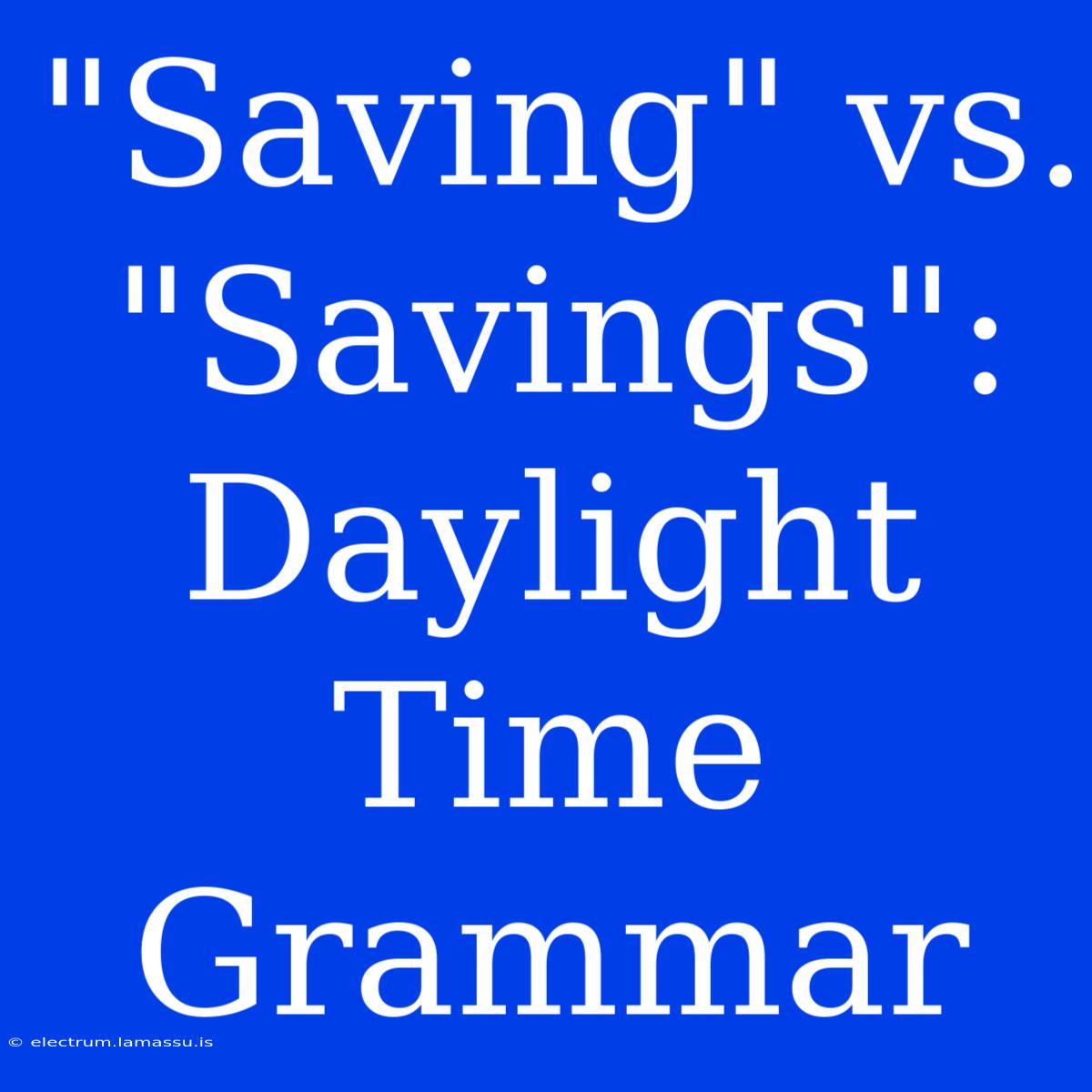"Saving" vs. "Savings": Daylight Time Grammar - Unraveling the Time-Saving Confusion
Do we "save" daylight time or "savings" of daylight time? This seemingly simple question has sparked endless debate, leaving many scratching their heads. Let's dive into the grammar of daylight saving time and shed some light on this time-honored linguistic dilemma.
Editor Note: The debate over "saving" vs. "savings" during daylight saving time has persisted for decades. It's essential to understand the correct grammatical usage to ensure clear and accurate communication.
This topic is important for several reasons:
- Avoiding grammatical errors: Proper grammar fosters professionalism and credibility.
- Improving communication: Using the correct term enhances clarity and avoids confusion.
- Understanding the concept: Grasping the grammatical nuances helps us better comprehend the concept of daylight saving time itself.
Our analysis involved delving into dictionaries, grammar guides, and historical usage patterns to offer a comprehensive understanding of this linguistic conundrum.
Key Takeaways of Daylight Saving Time Grammar:
| Term | Explanation |
|---|---|
| Saving | Refers to the act of conserving something. |
| Savings | Refers to the amount conserved or money saved. |
| Daylight Time | Refers to the time during the summer months when clocks are moved ahead. |
"Saving" Daylight Time
The term "saving" daylight time refers to the act of conserving daylight hours. This is the correct grammatical usage when discussing the concept of adjusting clocks to extend daylight into the evening.
Example: "During daylight saving time, we are saving daylight hours by shifting the clock forward."
Further analysis:
- This usage emphasizes the action of extending daylight, not the quantity of daylight saved.
- The term "saving" is a present participle, highlighting the ongoing nature of the process.
"Savings" of Daylight Time
The term "savings" of daylight time is grammatically incorrect. It implies a quantity of time saved, which is not accurate. The act of changing the clock doesn't actually create more time; it simply redistributes it.
Example: "We do not gain a specific amount of daylight savings by changing the clock."
Further Analysis:
- Using "savings" falsely suggests that daylight saving time provides an extra amount of daylight.
- "Savings" is a noun, implying a measurable quantity, which is not applicable to daylight saving time.
FAQ on Daylight Saving Time Grammar
Q: Why is the debate over "saving" vs. "savings" so persistent?
A: The debate stems from the ambiguity of the term "daylight saving time." The concept of saving daylight is abstract, leading to confusion about the appropriate grammatical term.
Q: What do style guides suggest?
**A: ** Most reputable style guides, including the Associated Press (AP) Stylebook, recommend using "saving" when referring to daylight saving time.
Q: Is there any other alternative term?
A: Some use "daylight saving" (without "time") but this is not as widely accepted and can sound informal.
Q: Is it acceptable to use both "saving" and "savings" in different contexts?
A: While some may argue that using "savings" in informal speech is acceptable, it's best to stick to the grammatically correct term "saving" for clarity and professionalism.
Tips for Using Daylight Saving Time Grammar
- Stick to "saving": Always use "saving" when referring to the practice of daylight saving time.
- Focus on the action: Emphasize the act of conserving daylight hours, not a quantity of time saved.
- Use a present participle: "Saving" as a present participle captures the continuous nature of the process.
Daylight Saving Time Explained:
While the debate over "saving" vs. "savings" persists, it's important to understand what daylight saving time truly entails. Daylight saving time is a practice where clocks are shifted forward by an hour during the summer months to take advantage of longer daylight hours. This practice is meant to conserve energy and provide more time for outdoor activities during the warmer months.
Conclusion:
The correct way to refer to the practice of daylight saving time is "saving" daylight time. It's crucial to use the proper grammatical term for clarity and professionalism. By embracing the correct language, we ensure that communication about this time-sensitive issue is accurate and efficient.

